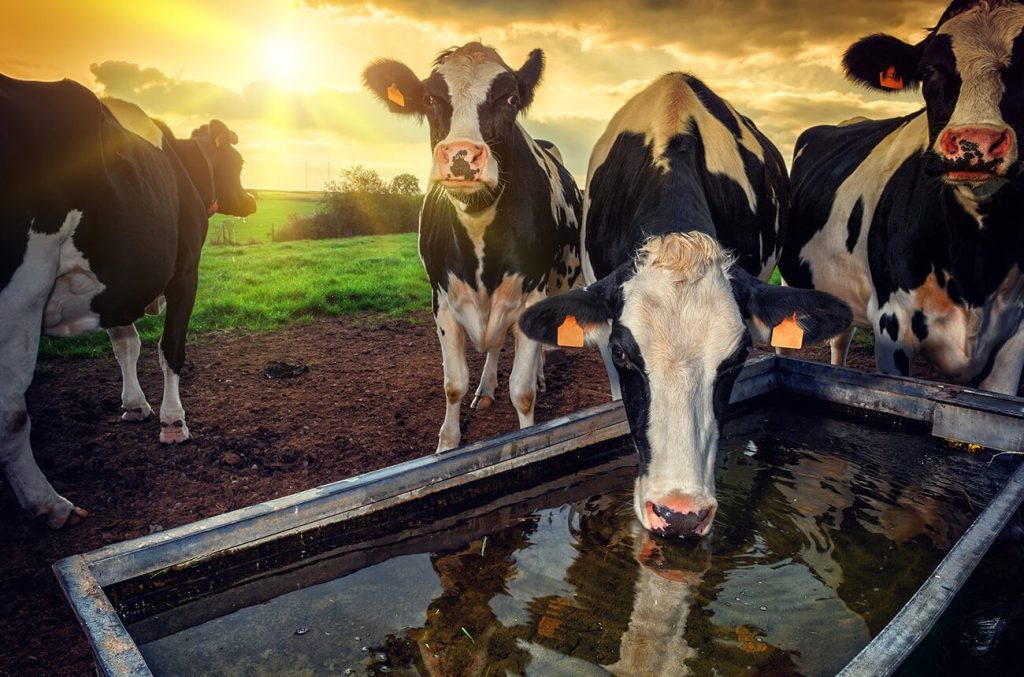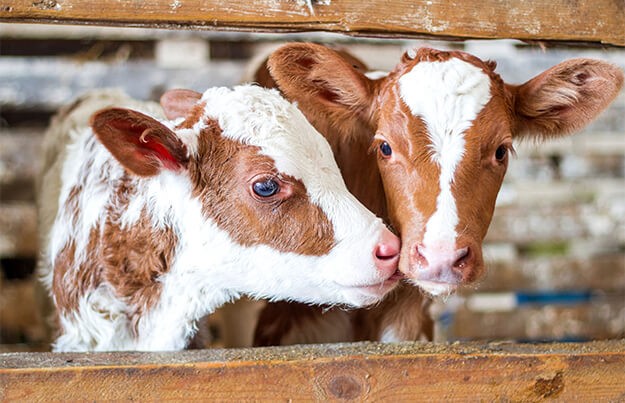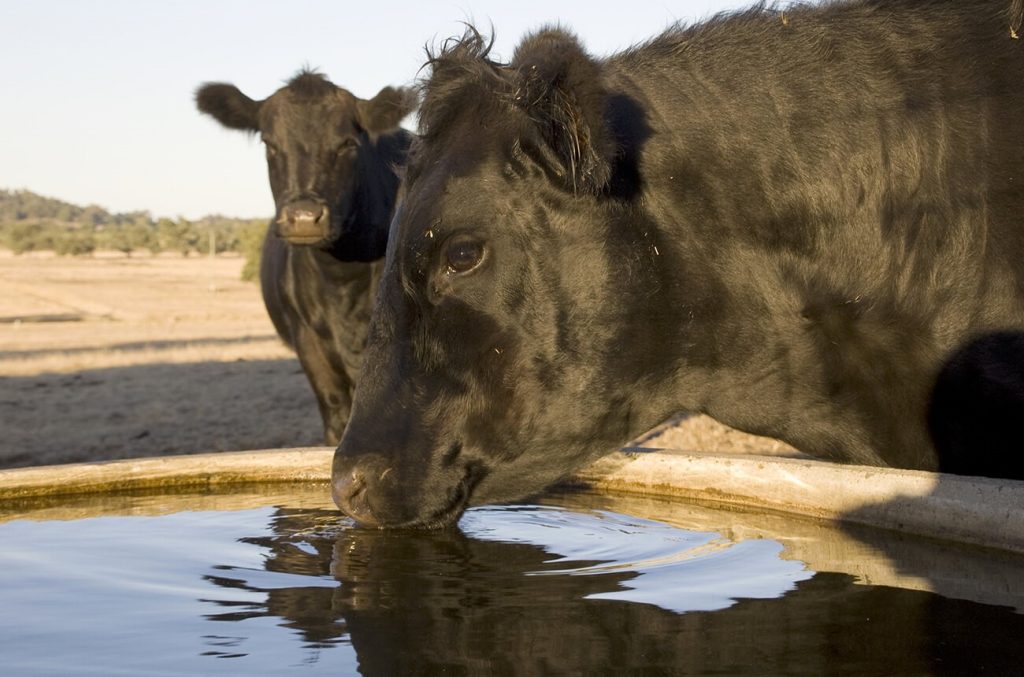Cow flatulence has been in the news and is a primary reason for environmental advocates to demand the culling and destruction of beef cattle and dairy cows. The thinking goes like this, methane traps 40x more heat than carbon dioxide and is a greenhouse gas. Cow farts contribute greatly to the global methane problem ergo kill all of the cows. Not only is this crazy, it’s not necessary, the fact is we are now able to practically eliminate cattle and cow flatulence (methane emissions) using a special engineered form of water that they drink as well as supplementing the feedstock that they are given.
By changing the gut flora, or the area surrounding the Rumen, we can alter the flora that lives there.
Methane is produced by anaerobes, and anaerobes do not flourish in the presence of oxygen.
Not only oxygen, new research also demonstrates that increasing the percentage of dissolved molecular hydrogen to 100µM (0.2 ppm) or more, thermodynamically inhibits the creation and production of methane.
Water that has first been filtered of contaminants, and then is super saturated at the nano-scale with a blend of both hydrogen and oxygen gasses, and is then offered to the cattle and cows for drinking is an ideal delivery mechanism.
In fact this has been demonstrated in real cattle and dairy farm trials over the course of the first 30 days the aerobic flora in the gut begin to overtake and out produce the anaerobes which tend to decrease and die off.
Presenting the cows and cattle with a blend of both oxygen and hydrogen infused electrically charged nanoplasmoid water, it is demonstrated that rumen methane production is suppressed.




Our Naneau Engineered Water™ technology creates a massive reduction in rumen based methane production while boosting the immune system and it’s response, it decreases the amount of vegetable protein needed to be consumed to convert to animal protein, it increases the nutrients that are absorbed by the cattle and cows, it reduces the ammonia in the urine, reduces veterinary costs and increases the milk production by up to 20%!
Methane (CH4) has been claimed to generate 40- 80 times the heat trapping effects of CO2 when it is trapped in the atmosphere creating an enhance greenhouse effect. Cattle and cows have been demonstrated to generate 400L to 500L of methane per day1.. Globally cattle and cows ruminant emissions produce 15-16%2,3 of total global methane emissions. This fact has caused some environmentalist groups to demand the slaughter of all cattle. For this reason any technology that is proven to demonstrate the eradication of these emissions and still allow for beef and dairy cattle production is obviously of interest and more humane than killing them outright. Traditionally methane is generated by feed fermentation, in a process that takes place in their multiple stomachs and their gut’s digestive system. This fermentation process is energy intensive and altering the process in a way that favors aerobic digestion is healthier for the cow and more environmentally favorable. By altering the feed that the feeder cattle and dairy cows eat, methane can be down regulated, supplements like seaweed have been shown to have efficacy as well as other food additives but this method is very costly and impractical.
Not only oxygen, new research also demonstrates that increasing the percentage of dissolved molecular hydrogen to 100µM (0.2 ppm) or more, thermodynamically inhibits the creation and production of methane while producing compounds that are easier to digest and assimilate by the cattle4,5.
Super saturating water to between 1.6 to 1.4 ppm is 7 to 8 times more hydrogen than the upper estimate of hydrogen concentration needed to eliminate methane production in cud and rumen. When we also increase the bioavailable oxygen in the water in the form of nanoplasmoids, we eliminate the environment necessary for the anaerobes to flourish and allow the healthy gut aerobes to proliferate.
Naneau Engineered Water™ has developed a scalable water filtration softening structuring and novel nanoplasmoid gas infusion system that can saturate large volumes of water in a single pass while infusing the water with a toroid shaped, electrically charged, gas filled nanobubbles using any gas or blend of gasses and our patented process generates an additonal blend of gasses from the water itself during this phase. When we introduce nano-scale gasses to the cattle and dairy cows, hundreds of millions of electrically charge nanobubbles per milliliter are imbibed and the massive surface area of the created charged bubbles allows for direct cellular penetration and utilization by the cattle.
In other words, when cattle and dairy cows drink our water, we can eliminate cow flatulence and methane generation, increase the overall health of the cattle, increase the milk production, increase nutrient absorption and decrease veterinary costs while at the same times increasing the fertilizer aspect of the manure reducing the odor and the ammonia content of the urine!
Existing Technology
We have already proven this in real world animal husbandry studies, and both addition of hydrogen and oxygen contribute to the overall effects. Change the gut flora and change the overall health of the animals.
Bubbles in General
Have you ever seen gas bubbles rising in your glass of soda pop, sparkling mineral water ? Have you noticed that they rise to the surface of the bottle or glass bursting into the atmosphere? Have you, ever seen the air bubbles produced by an aquarium aeration stone float in a column to the top of the tank and rupture there? In the instance of your soda pop, the sweetened flavored water contains CO2, in an aquarium, atmospheric ambient air gasses are inside ppf the bubbles (approximatively 21% Oxygen, 78% nitrogen, with other gasses mostly CO2, neon and Hydrogen). In the instance of soda pop, the CO2 is dissolved under pressure into the flavored sweetened water, and after the bottle is opened, the pressure drops, which causes extra CO2 to rise to the top of the solution and to form gaseous bubbles. In an aquarium, air is pressurized through a porous “air” stone to make bubbles. The goal of the aquarium stone is to disperse oxygen faster in the water than the oxygen gets used up by the fish and other aquatic life in aquarium. In nature this is accomplished by having far more surface area of the water exposed to the ambient atmosphere than in the aquarium tank. In fact the more bubbles that are produced the more surface area there is exposed to the air to exchange. Even though we can increase the surface area water has a natural saturation upper limit using normal large sized bubbles. In fact the colder the water is, the more oxygen can be dissolved in it at the same relative pressure. This is why arctic waters produce healthier fish and wildlife, there is more oxygen in the water.
Size of the Bubble
Yes size does matter! Large bubbles rise to the surface of the fluid and then break and the contents are distributed into the atmosphere. Additionally larger bubble sizes offer less surface area than smaller bubbles. The smaller the bubbles are broken down the greater the surface area increases and the more the bioavailability increases.
Microbubbles
Microbubbles are incredibly small, and their diameter falls in realm of micro meters or microns. That is, one micron is one million times smaller than a meter! By way of comparison, CO2 bubbles in soda pop are about one millimeter, a micro bubble is one thousand times smaller than that! Water that is saturated with microbubbles becomes turbid and milky. Even though microbubbles are tiny, they continue to rise to the water’s surface, burst, and disappear. However, because of this due to their small size, there is a corresponding increase in the exchange of the gases with the water! Consequently, the concentration of the dissolved gas in treated water, becomes saturated very rapidly. Regardless, the gasses still escape into the atmosphere and therefore the water loses the gas saturation and it effects are ultimately lost.
Nanoplasmoids
Nanoplasmoids are electrically charged gasses inside of bubbles that are 1000x times smaller than even the small size of a microbubble. Nanobubbles were theorized in 2000 and practically proven in 2005 and debuted at the World Fair in Tokyo, Japan. Once a bubble gets beneath 100 nm or 1 micron, it is considered to be a true nanobubble and has many novel properties. Bubbles under 100 nm do not rise to the surface or burst. Second, there is a zeta potential shift that occurs and generates a negative electrical charge, which means that like magnets with the same polarity, they push away from each other, and as such are unable to form larger bubbles. Third, they become stable and last for months to years in the fluid due to their small size and electrical charge they are easily able to penetrate cell membranes are bio-available. Lastly, the amount of oxygen or gasses, due to massive surface area and distribution exceeds normal solubility of traditional large bubble saturation levels.
Naneau Engineered Water starts with any traditional well or municipal water source, the first stage is to run it through our unique nanotechnology filter media, this removes the iron manganese and other unhealthy minerals, the forever chemicals, the disinfection by-products, viruses (99.9999999%) and bacteria (99.9999999999%), while retaining the minerals necessary for health and life. Next we soften the water and change the state of the calcium to its ionic state using magnetics vortexing and special catalysts, the filtered bacteriostatic softened water is then run through the proprietary nanoplasmod generating system where desired gasses or gas blends are introduced, and then micronized and then nanotized in the presence of an electrical field and or radio waves and other frequencies, finally the stable solution is imprinted with the very essence of life- the biofield; which causes living organisms and life to flourish and thrive, cattle to grow faster, dairy cows to give more milk and many other systemic changes occur.
References:
- Chaucheyras-Durand, F., Masséglia, S., Fonty, G. & Forano, E. Influence of the composition of the cellulolytic flora on the development of hydrogenotrophic microorganisms, hydrogen utilization, and methane production in the rumens of gnotobiotically reared lambs. Applied and environmental microbiology 76, 7931-7937 (2010). 10.1128/AEM.01784-10
- Mitsumori, M. & Sun, W. Control of rumen microbial fermentation for mitigating methane emissions from the rumen. Asian-Australasian Journal of Animal Sciences 21, 144-154 (2008). 10.5713/ajas.2008.r01
- Tseten, T., Sanjorjo, R. A., Kwon, M. & Kim, S.-W. Strategies to Mitigate Enteric Methane Emissions from Ruminant Animals. Journal of Microbiology and Biotechnology 32, 269-277 (2022). 10.4014/jmb.2202.02019
- Ungerfeld, E. M. Metabolic hydrogen flows in rumen fermentation: principles and possibilities of interventions. Frontiers in Microbiology 589 (2020). 10.3389/fmicb.2020.00589
- Janssen, P. H. Influence of hydrogen on rumen methane formation and fermentation balances through microbial growth kinetics and fermentation thermodynamics. Animal Feed Science and Technology 160, 1-22 (2010). 10.1016/j.anifeedsci.2010.07.002
- Scott, R. I. et al. The presence of oxygen in rumen liquor and its effects on methanogenesis. Journal of Applied Bacteriology 55, 143-149 (1983). 10.1111/j.1365-2672.1983.tb02658.x
- Oxygen and Air Nanobubble Water Solution Promote the Growth of Plants, Fishes, and Mice Kosuke Ebina1*, Kenrin Shi1, Makoto Hirao2, Jun Hashimoto3, Yoshitaka Kawato1, Shoichi Kaneshiro1,Tokimitsu Morimoto1, Kota Koizumi1, Hideki Yoshikawa1
- Oxygenated Drinking Water Enhances Immune Activity in Pigs and Increases Immune Responses of Pigs during Salmonella Typhimurium Infection Bock-Gie JUNG1), Jin-A LEE1) and Bong-Joo LEE1)* 1)College of Veterinary Medicine, Chonnam National University, 300 Yongbong-dong, Buk-gu, Gwangju 500–757, Republic of Korea
- Effects of oxygenated or hydrogenated water on growth performance, blood parameters, and antioxidant enzyme activity of broiler chickens D. Shin,∗,1 E. S. R. Cho,†,1 H-T Bang,‡ and K. S. Shim†,2 ∗Berry & Bio Food Research Institute, Gochang 585-943, Republic of Korea; Department of Animal Biotechnology, Chonbuk National University, Jeonju 561-756, Republic of Korea; and ‡National Institute of Animal Science, Rural Development Administration, Poultry Science Division, Cheonan, 331-801, Korea
- Oxygenated Drinking Water Enhances Immune Activity in Broiler Chicks and Increases Survivability against Salmonella Gallinarum in Experimentally Infected Broiler Chicks Bock-Gie JUNG1), Jin-A LEE1), Kyoung-Woo NAM2) and Bong-Joo LEE1)* 1)College of Veterinary Medicine, Chonnam National University, 300 Yongbong-dong, Buk-gu, Gwangju 500–757, Republic of Korea 2)Special Quarantine Division, Animal, Plant & Fisheries Quarantine & Inspection Agency, 175 Anyang-ro, Manan-gu, Anyang, Gyeonggi 430–757, Republic of Korea
- Reduction of Ammonia Emission in Chicken Farms by Improved Water systems Chuanwu Xi*, Liyan Song, Jianfeng Wu and Walter Bauer Department of Environmental Health Sciences, University of Michigan School of Public Health, Ann Arbor,MI, USA